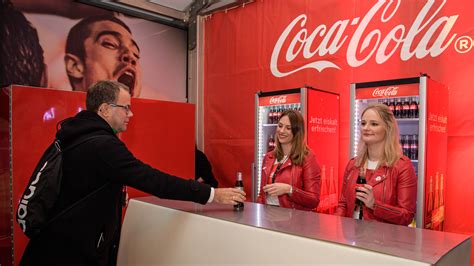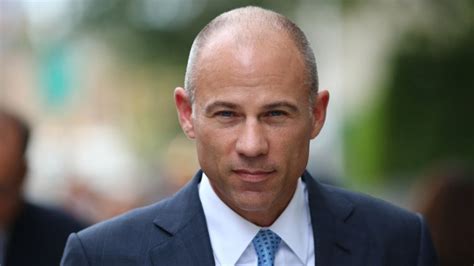
A promotional video showcasing an “ideal town” envisioned by conservatives has backfired, drawing widespread mockery and accusations of dystopian aesthetics on social media. Critics are lambasting the video for its perceived lack of diversity, sterile environment, and Stepford-like atmosphere, inadvertently highlighting the very qualities conservatives often criticize in progressive urban planning. The video, intended to promote a utopian vision of traditional values, has instead become a viral example of what many perceive as a culturally homogenous and unnervingly artificial community.
The controversial video, initially intended to showcase a master-planned community rooted in conservative principles, quickly ignited a firestorm of criticism after it was widely shared online. Social media users across various platforms, including X (formerly Twitter) and TikTok, ridiculed the project’s perceived homogeneity, lack of cultural vibrancy, and unsettlingly uniform appearance. Many likened the envisioned town to a “Stepford Wives” scenario or a scene from a dystopian film, highlighting the unintended consequences of attempting to engineer a perfect society based on narrow ideological lines.
The backlash centered on the video’s depiction of an idealized town populated seemingly exclusively by white, nuclear families engaged in activities stereotypically associated with traditional American values. Critics argued that this homogenous portrayal deliberately excluded diverse ethnic, racial, and socioeconomic backgrounds, creating an unrealistic and exclusionary vision of community. “Everyone’s saying the same thing” about the video, noted Yahoo News, highlighting the widespread consensus on the video’s problematic imagery and underlying message.
Many commenters pointed out the irony of conservatives, who often critique progressive urban planning for fostering a lack of community and imposing artificial social structures, inadvertently creating their own version of a meticulously planned, yet soulless environment. The video’s perceived lack of spontaneity, organic growth, and cultural diversity stood in stark contrast to the vibrant, diverse, and often chaotic nature of real-world communities.
The video also sparked debate about the role of urban planning in shaping social values and the potential pitfalls of attempting to impose a specific ideological vision on a community. Critics argued that true community arises from organic interactions, shared experiences, and mutual respect for diversity, not from pre-determined social engineering. The backlash against the video underscored the importance of inclusivity, authenticity, and cultural richness in creating thriving and sustainable communities.
The incident serves as a cautionary tale about the dangers of ideological echo chambers and the unintended consequences of attempting to create a utopian society based on narrow and exclusionary principles. It also highlights the power of social media to amplify criticism and hold individuals and organizations accountable for their messaging and actions.
Several key themes emerged from the widespread criticism of the video:
- Lack of Diversity: The homogenous portrayal of the community as exclusively white and traditionally family-oriented drew accusations of exclusion and a lack of representation for diverse ethnic, racial, and socioeconomic backgrounds.
- Artificiality: The meticulously planned and overly manicured environment was perceived as sterile and lacking the spontaneity and organic growth characteristic of real-world communities.
- Dystopian Aesthetics: The video’s Stepford-like atmosphere and unsettling uniformity evoked comparisons to dystopian films and fictional societies where individuality is suppressed in favor of conformity.
- Irony: Critics pointed out the irony of conservatives, who often critique progressive urban planning, creating their own version of a rigidly controlled and artificially engineered community.
- Social Engineering: The video sparked debate about the ethics of attempting to impose a specific ideological vision on a community through urban planning and social engineering.
The controversy surrounding the video underscores the importance of inclusivity, authenticity, and cultural richness in creating thriving and sustainable communities. It also serves as a reminder of the power of social media to amplify criticism and hold individuals and organizations accountable for their messaging and actions. The failure of this promotional video underscores the difficulties of promoting an “ideal town” based on a narrow vision of society and the importance of understanding and respecting the complexities of real-world communities. The widespread negative reaction is not only a critique of the specific project, but also a broader commentary on the dangers of ideological homogeneity and the importance of embracing diversity and inclusivity in all aspects of society.
The video’s unintentional descent into parody highlights the difficulties inherent in trying to manufacture a perfect society. Real communities thrive on the unpredictable energy of diverse populations, conflicting viewpoints, and the messy realities of everyday life. Attempting to erase these elements in the name of some idealized vision inevitably leads to a sterile and unappealing imitation of genuine community.
Furthermore, the episode reveals a significant disconnect between the intended message of the video and its actual reception. The creators likely envisioned a welcoming haven for like-minded individuals seeking a traditional lifestyle. However, the video failed to resonate with a broader audience, instead triggering feelings of unease and exclusion. This miscommunication underscores the importance of understanding diverse perspectives and avoiding the pitfalls of confirmation bias when crafting public-facing messages. The incident can be viewed as a case study in how good intentions can go awry when coupled with a lack of awareness and sensitivity to the complexities of modern society. The conservative group’s attempt to present an ideal vision of community inadvertently exposed the limitations and potential pitfalls of their worldview.
The fallout from the video serves as a valuable lesson for anyone seeking to build communities or promote social change. True progress requires embracing diversity, fostering open dialogue, and respecting the autonomy of individuals. Attempts to impose rigid ideological frameworks or engineer predetermined outcomes are likely to backfire, leading to unintended consequences and widespread criticism. The incident also highlights the importance of critical self-reflection and a willingness to learn from mistakes. Organizations and individuals should be open to feedback and willing to adapt their approaches in response to changing social norms and evolving perspectives. The “ideal town” video has become a cautionary tale, demonstrating the dangers of ideological hubris and the importance of humility and inclusivity in building thriving and sustainable communities. The controversy surrounding the video highlights a deep divide in American society regarding values, lifestyles, and visions for the future. While conservatives may yearn for a return to traditional values and a simpler way of life, many others embrace diversity, progress, and the complexities of modern society. The video’s failure to resonate with a broader audience underscores the challenges of bridging this divide and finding common ground in a deeply polarized nation.
The incident is a powerful reminder of the importance of understanding one’s audience and considering the potential impact of messaging on diverse groups. The creators of the video likely failed to anticipate the negative reaction it would provoke, demonstrating a lack of awareness of the sensitivities and concerns of many Americans. This lack of awareness highlights the importance of engaging in meaningful dialogue with diverse communities and seeking feedback from individuals with different perspectives. The “ideal town” video serves as a stark example of the dangers of creating echo chambers and the importance of stepping outside of one’s comfort zone to understand the world from different points of view.
The viral backlash against the video is a testament to the power of social media to amplify critical voices and hold individuals and organizations accountable. In the past, a video like this might have gone largely unnoticed, or at least not subjected to the same level of scrutiny. However, in the age of social media, even relatively obscure content can quickly go viral, sparking widespread debate and criticism. This underscores the importance of being mindful of the potential impact of one’s words and actions in the digital age. The conservative group responsible for the video has learned a valuable lesson about the power of social media and the importance of considering the potential consequences of one’s actions in a hyper-connected world. The incident serves as a reminder that in the digital age, reputation management is more important than ever.
The debate surrounding the video also touches on broader questions about the role of government and the private sector in shaping communities. Should developers be allowed to create communities that cater to specific ideological groups? Should governments encourage or discourage such developments? These are complex questions with no easy answers. However, the controversy surrounding the “ideal town” video underscores the importance of ensuring that all communities are inclusive and welcoming to people of all backgrounds.
The incident also raises questions about the nature of community itself. What does it mean to belong to a community? What are the essential elements of a thriving community? These are questions that have been debated for centuries. However, the controversy surrounding the “ideal town” video suggests that true community requires more than just shared values or a common ideology. It also requires diversity, inclusivity, and a willingness to embrace the messy realities of human interaction. The “ideal town” video, in its attempt to create a perfect community, inadvertently revealed the limitations of such an approach.
The backlash against the video highlights the importance of authenticity and transparency in marketing and public relations. People are increasingly skeptical of manufactured images and carefully crafted narratives. They want to see the real people behind the message and they want to know that the message is genuine. The “ideal town” video, with its overly polished and artificial imagery, failed to connect with viewers on an emotional level. It came across as inauthentic and disingenuous, which only amplified the negative reaction. The incident serves as a reminder that in today’s world, authenticity and transparency are essential for building trust and credibility.
The “ideal town” video has inadvertently sparked a broader conversation about the future of American society. What kind of country do we want to live in? Do we want a country that is divided along ideological lines, or do we want a country that is united by shared values and a common sense of purpose? These are questions that all Americans need to grapple with. The controversy surrounding the “ideal town” video, while seemingly trivial on the surface, has touched on some of the most fundamental issues facing our nation. The incident serves as a reminder that we are all in this together and that we need to find ways to bridge our differences and work towards a more inclusive and just society.
The “Conservatives Unwittingly Roast Themselves With Dystopian “Ideal Town” Video” saga demonstrates the complex interplay between intention, perception, and the power of social media in shaping public opinion. The incident serves as a cautionary tale for anyone seeking to promote a specific vision of society, highlighting the importance of inclusivity, authenticity, and a deep understanding of diverse perspectives. The legacy of the video will likely be as a reminder of the dangers of ideological echo chambers and the importance of embracing the messy, unpredictable, and ultimately beautiful reality of human communities.
Frequently Asked Questions (FAQ):
1. What was the purpose of the “ideal town” video?
The video was intended to promote a master-planned community rooted in conservative principles, showcasing an idealized vision of traditional values and a homogenous community. The aim was likely to attract like-minded individuals seeking a specific lifestyle and social environment. However, the exact goals and intended audience were not explicitly stated by the organization behind the video.
2. Why did the video receive so much criticism?
The video was criticized for its perceived lack of diversity, sterile environment, and Stepford-like atmosphere. Many felt it portrayed an unrealistic and exclusionary vision of community, deliberately excluding diverse ethnic, racial, and socioeconomic backgrounds. The video’s lack of spontaneity and organic growth also stood in contrast to the vibrant, diverse nature of real-world communities.
3. What were some of the main points of contention highlighted by social media users?
Social media users criticized the video’s homogenous portrayal of white, nuclear families, its artificial and overly manicured environment, and its unsettling uniformity, which evoked comparisons to dystopian films. Many also pointed out the irony of conservatives, who often critique progressive urban planning, creating their own version of a rigidly controlled community.
4. How did the video backfire on the conservatives who created it?
The video backfired by drawing widespread mockery and accusations of dystopian aesthetics. Instead of promoting a positive image of their “ideal town,” it inadvertently highlighted the very qualities that critics often associate with conservative ideology: a lack of diversity, a rigid social structure, and a stifling atmosphere of conformity. The video’s unintended consequences undermined its original purpose and damaged the credibility of its creators.
5. What lessons can be learned from the controversy surrounding the video?
The controversy underscores the importance of inclusivity, authenticity, and cultural richness in creating thriving communities. It also serves as a reminder of the power of social media to amplify criticism and hold individuals and organizations accountable for their messaging and actions. Furthermore, it highlights the dangers of ideological echo chambers and the potential pitfalls of attempting to create a utopian society based on narrow and exclusionary principles.
6. What specific aspects of the video led to comparisons with “The Stepford Wives?”
The unnerving uniformity of the residents, their seemingly perfect and subservient behavior, and the overly manicured and artificial environment all contributed to the “Stepford Wives” comparisons. The film depicts a town where women are replaced with docile, robotic versions of themselves, embodying an extreme form of conformity and suppression of individuality. Critics felt the video echoed these themes, suggesting a similar desire to control and homogenize society.
7. How does this situation reflect broader cultural and political divides in the United States?
The controversy highlights a deep divide in American society regarding values, lifestyles, and visions for the future. While some conservatives may yearn for a return to traditional values and a simpler way of life, many others embrace diversity, progress, and the complexities of modern society. The video’s failure to resonate with a broader audience underscores the challenges of bridging this divide and finding common ground in a deeply polarized nation. It taps into anxieties about cultural change, demographic shifts, and the perceived erosion of traditional values.
8. What is the role of urban planning in shaping social values, as evidenced by this controversy?
The controversy demonstrates how urban planning can be used to promote or undermine specific social values. The “ideal town” video showcased an attempt to engineer a community based on conservative principles, emphasizing traditional family structures, conformity, and a homogenous cultural environment. Critics argued that this approach deliberately excluded diversity and stifled individuality, highlighting the potential pitfalls of using urban planning to impose a particular ideological vision. The incident underscores the importance of considering the social and ethical implications of urban planning decisions and ensuring that communities are designed to be inclusive, equitable, and sustainable.
9. Can you provide examples of specific criticisms leveled against the video’s portrayal of families and community life?
Critics pointed out that the video exclusively featured heterosexual, nuclear families, seemingly excluding single-parent households, LGBTQ+ individuals, and other diverse family structures. The activities depicted were often stereotypically traditional, such as barbecues, picnics, and church gatherings, reinforcing a narrow and exclusionary vision of community life. Commenters also noted the absence of visible ethnic and racial diversity, further contributing to the perception of a homogenous and unrealistic portrayal of community.
10. How has social media amplified the impact of this video and the subsequent criticisms?
Social media provided a platform for widespread criticism and mockery of the video, allowing individuals from diverse backgrounds and perspectives to share their reactions and opinions. The video’s viral spread amplified its reach and impact, turning a relatively obscure promotional piece into a national controversy. Social media also facilitated the rapid dissemination of memes, parodies, and satirical commentary, further contributing to the video’s negative reception. The incident demonstrates the power of social media to hold individuals and organizations accountable and to shape public opinion in the digital age.









